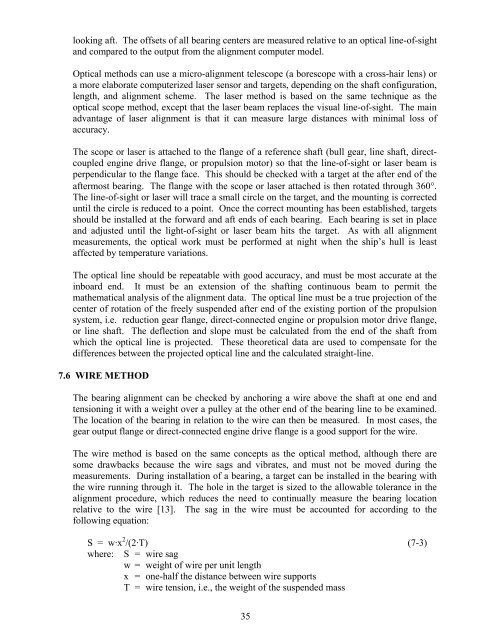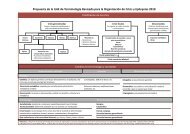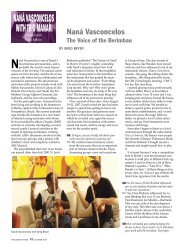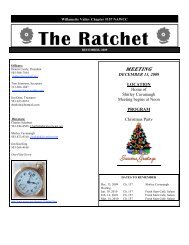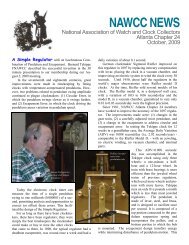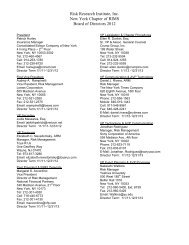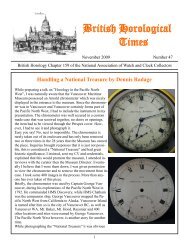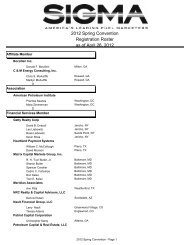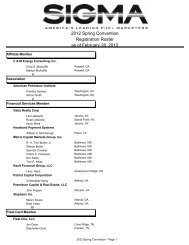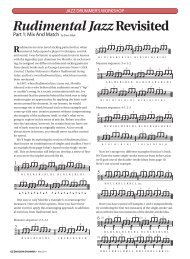Technical and Research Bulletin 3-51 - Amazon Web Services
Technical and Research Bulletin 3-51 - Amazon Web Services
Technical and Research Bulletin 3-51 - Amazon Web Services
Create successful ePaper yourself
Turn your PDF publications into a flip-book with our unique Google optimized e-Paper software.
looking aft. The offsets of all bearing centers are measured relative to an optical line-of-sight<br />
<strong>and</strong> compared to the output from the alignment computer model.<br />
Optical methods can use a micro-alignment telescope (a borescope with a cross-hair lens) or<br />
a more elaborate computerized laser sensor <strong>and</strong> targets, depending on the shaft configuration,<br />
length, <strong>and</strong> alignment scheme. The laser method is based on the same technique as the<br />
optical scope method, except that the laser beam replaces the visual line-of-sight. The main<br />
advantage of laser alignment is that it can measure large distances with minimal loss of<br />
accuracy.<br />
The scope or laser is attached to the flange of a reference shaft (bull gear, line shaft, directcoupled<br />
engine drive flange, or propulsion motor) so that the line-of-sight or laser beam is<br />
perpendicular to the flange face. This should be checked with a target at the after end of the<br />
aftermost bearing. The flange with the scope or laser attached is then rotated through 360°.<br />
The line-of-sight or laser will trace a small circle on the target, <strong>and</strong> the mounting is corrected<br />
until the circle is reduced to a point. Once the correct mounting has been established, targets<br />
should be installed at the forward <strong>and</strong> aft ends of each bearing. Each bearing is set in place<br />
<strong>and</strong> adjusted until the light-of-sight or laser beam hits the target. As with all alignment<br />
measurements, the optical work must be performed at night when the ship’s hull is least<br />
affected by temperature variations.<br />
The optical line should be repeatable with good accuracy, <strong>and</strong> must be most accurate at the<br />
inboard end. It must be an extension of the shafting continuous beam to permit the<br />
mathematical analysis of the alignment data. The optical line must be a true projection of the<br />
center of rotation of the freely suspended after end of the existing portion of the propulsion<br />
system, i.e. reduction gear flange, direct-connected engine or propulsion motor drive flange,<br />
or line shaft. The deflection <strong>and</strong> slope must be calculated from the end of the shaft from<br />
which the optical line is projected. These theoretical data are used to compensate for the<br />
differences between the projected optical line <strong>and</strong> the calculated straight-line.<br />
7.6 WIRE METHOD<br />
The bearing alignment can be checked by anchoring a wire above the shaft at one end <strong>and</strong><br />
tensioning it with a weight over a pulley at the other end of the bearing line to be examined.<br />
The location of the bearing in relation to the wire can then be measured. In most cases, the<br />
gear output flange or direct-connected engine drive flange is a good support for the wire.<br />
The wire method is based on the same concepts as the optical method, although there are<br />
some drawbacks because the wire sags <strong>and</strong> vibrates, <strong>and</strong> must not be moved during the<br />
measurements. During installation of a bearing, a target can be installed in the bearing with<br />
the wire running through it. The hole in the target is sized to the allowable tolerance in the<br />
alignment procedure, which reduces the need to continually measure the bearing location<br />
relative to the wire [13]. The sag in the wire must be accounted for according to the<br />
following equation:<br />
S = w·x 2 /(2·T) (7-3)<br />
where: S = wire sag<br />
w = weight of wire per unit length<br />
x = one-half the distance between wire supports<br />
T = wire tension, i.e., the weight of the suspended mass<br />
35


